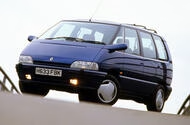Why Are People Carriers Suddenly Back in the Conversation?
For years, if you needed to haul a big family or a mountain of gear, the answer was simple: get a people carrier, or MPV. Think Renault Scenic, Vauxhall Zafira, Ford Galaxy—these were the workhorses of European roads, offering space and practicality without the bulk of a van. At their peak, MPVs grabbed over 10% of the market, thanks to their clever packaging and ability to seat seven without hogging the whole driveway.
But then, something changed. The Nissan Qashqai arrived in 2006, and suddenly, everyone wanted a crossover. SUVs became the new family favorite, blending rugged looks with car-like comfort. Fast-forward to today, and SUVs make up more than half of all car sales in Europe. MPVs? They’ve slipped into the background, barely registering in single-digit market share.
So why are car designers, like Renault’s Gilles Vidal, talking about a comeback for the humble people carrier? It turns out, the winds of change are blowing again—and this time, efficiency and electrification are at the heart of it.
What’s Driving the Shift Away from SUVs?
Let’s be honest: SUVs have their perks. They’re roomy, practical, and for many, they just look right. But there’s a growing chorus in Europe criticizing SUVs for their size, weight, and environmental impact—a trend some are calling SUV bashing. The irony? MPVs aren’t exactly featherweights or paragons of efficiency either, but they’ve always had a reputation as respectable family haulers.
Here’s where things get interesting. As automakers race to electrify their lineups, the old rules about car design are changing. Electric vehicles (EVs) use what’s called a skateboard architecture—a flat battery pack under the floor—which opens up new possibilities for interior space and layout. Suddenly, the tall, boxy shape of an MPV starts to make a lot of sense again, especially if you want to maximize roominess without sacrificing efficiency.
Gilles Vidal points out that as brands chase better aerodynamics and lower energy consumption, the classic SUV silhouette might start to morph. Picture something lower, sleeker, but still just as practical—a blend of SUV and MPV that’s easier on the eyes and the environment.
Are MPVs Really More Efficient Than SUVs?
It’s tempting to think that swapping an SUV for an MPV will automatically save you energy and money. The reality is a bit more nuanced. Both vehicle types are typically built on similar platforms, use similar materials, and weigh about the same. Where MPVs can pull ahead is aerodynamics: their smoother, less aggressive shapes can help reduce drag, which matters a lot for electric cars trying to squeeze every mile out of a battery.
But don’t expect miracles. According to Vidal, the efficiency gains are likely to be incremental rather than revolutionary. Still, in a world where every bit of range counts, even small improvements can tip the scales for buyers.
What’s Happening in Other Markets—And Could It Happen Here?
If you want a glimpse of the future, look east. In China, the world’s largest car market, MPVs are having a moment. Brands like Zeekr, Lynk&Co, Li Auto, Denza, and Xpeng are rolling out luxurious, tech-laden people movers that rival high-end sedans for comfort and gadgetry. These aren’t your parents’ minivans—they’re status symbols, packed with features you’d expect in a Mercedes S-Class or BMW 7 Series.
Why does this matter for Europe? Trends that take off in China often ripple out globally, especially as automakers look for ways to stand out in a crowded market. If European buyers start to crave the same blend of space, tech, and efficiency, MPVs could be poised for a renaissance.
Could the Next Big Family Car Be a Stylish MPV?
Renault certainly thinks so. Their upcoming Emblème concept is a case in point: it borrows the raised ride height of an SUV but wraps it in a sleeker, more aerodynamic body. The goal? To offer the best of both worlds—practicality and desirability, without the excess bulk or inefficiency.
There’s also talk of reviving classic MPV names, like the Espace, but with a modern twist: all-electric, sharp-nosed, and ready to take on rivals like the Volkswagen ID Buzz. Still, don’t expect a full-on retro revival. Renault’s design language is moving forward, aiming for innovation and emotion rather than nostalgia or sci-fi gimmicks.
What Should Families Look for When Choosing Their Next Car?
If you’re in the market for a new family car, it’s worth keeping an eye on these trends. The lines between SUVs and MPVs are blurring, and the next few years could bring a wave of vehicles that combine the best features of both. Look for models that prioritize interior flexibility, efficient packaging, and aerodynamic design—especially if you’re considering an EV.
And don’t be afraid to buck the trend. The most desirable car isn’t always the flashiest or the most popular—it’s the one that fits your family’s needs, your budget, and your values.
The big takeaway? The future of family cars isn’t about perfection—it’s about smarter adjustments. Start with one change this week, and you’ll likely spot the difference by month’s end.

